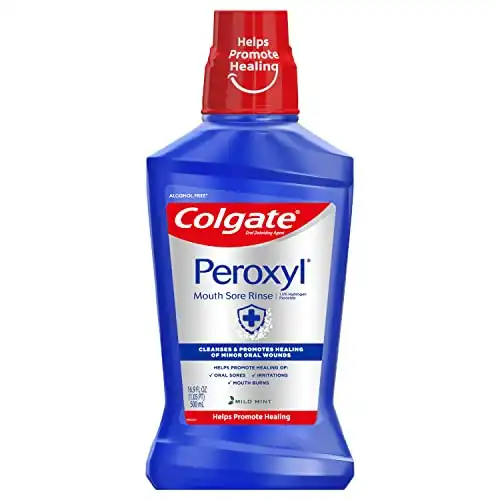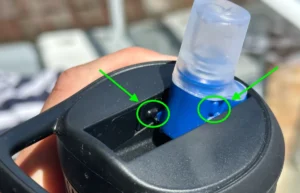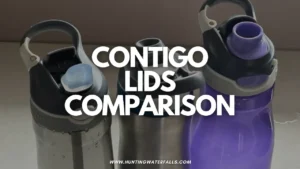On a camping trip a month or two back, I let one of my friends borrow a spare Nalgene for the weekend. And unfortunately, he must have drunk some of the funkiest herbal tea out of it that I’ve ever tasted.
Five washes later and my water was still tasting like rotten lavender and chamomile.
After more trial and error than was probably worth it, I can at least now say that I’m an expert on getting weird tastes out of reusable plastic water bottles.
The first step to get weird tastes out of a plastic bottle is to simply give it a deep cleaning, using water bottle cleaning tablets, followed by a thorough scrub with dish soap and a soft-bristled bottle brush.
If your bottle has a weird plastic-like taste, try soaking it in fresh-squeezed lemon juice and hot water before washing.
If your bottle has an earthy or mildewy taste, soak the bottle in diluted vinegar and scrub with a paste made of baking soda and water, paying particular attention to the underside of the lid.
If your bottle has absorbed the flavor of something you were drinking from it, soak your bottle overnight with hot water, a few drops of bleach, and a teaspoon or two of baking soda.
One of the main reasons I prefer stainless steel water bottles to plastic water bottles is because it’s so much harder to get strange tastes out of plastic.
Not only does plastic absorb taste more easily, it’s also harder to clean without damaging your bottle and the bottle itself can give off a weird plastic taste.
Unfortunately, there’s no foolproof way to remove strange tastes from a plastic bottle, so it may take some trial and error before you get it right. You also need to approach removing different funky flavors in different ways.
Mold and mildew flavors should obviously be treated by killing the mold which is different from removing plasticky tastes which is different again from removing flavors that seem to have been absorbed into the plastic.
Even then, some tastes are so stubborn that you may just need a new bottle entirely.
But the good news is, none of the methods you can try are particularly time consuming or expensive. So there’s really no harm in trying to save your bottle if you can.
Start With A Thorough Cleaning
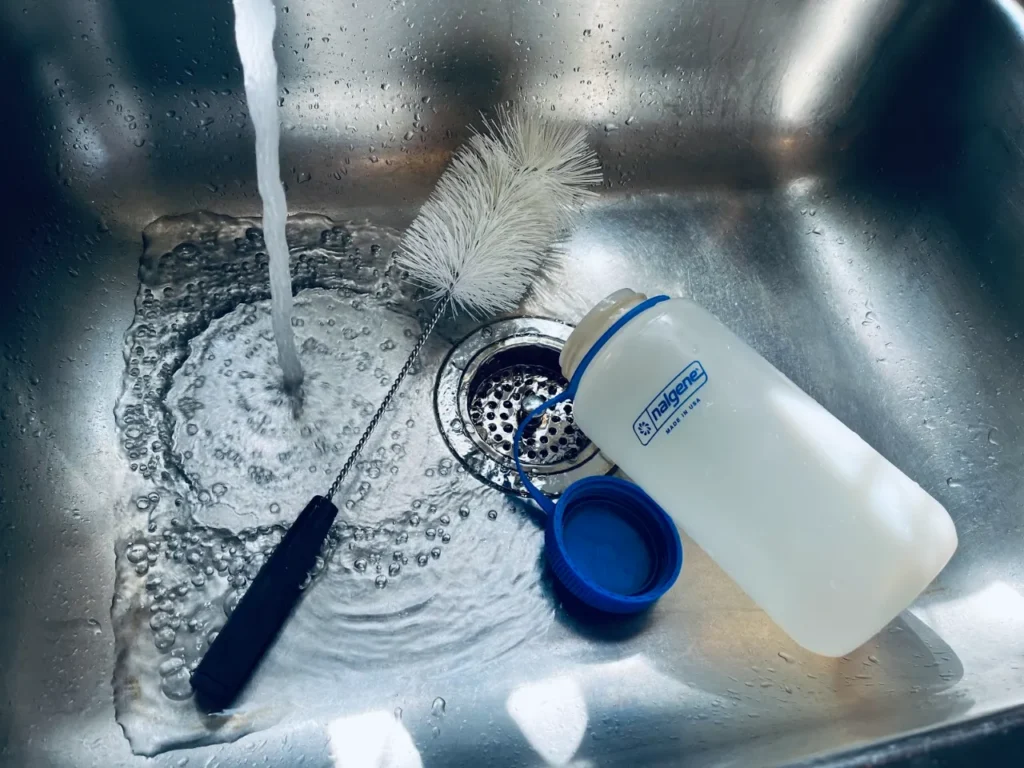
If you’re not caring for your bottle as you should, mildew, bacteria, and drink residue will slowly build up inside and affect the taste of your drinks.
You’ll likely barely even notice at first, but over time it’ll continue to get worse and worse.
For the most part, simply taking the time to thoroughly clean your bottle every couple of uses should prevent the issue.
And sometimes, even if you’ve let it get too far, a really deep cleaning is all that’s really needed to remove those weird tastes.
- Optionally, soak your bottle for about 15 minutes with water bottle cleaning tablets, to help loosen up any stubborn stuck-on residue.
- Using hot water, dish soap, and a non-abrasive bottle brush set (so you don’t scratch the inside of your bottle), scrub all interior surfaces of your bottle.
- Rinse well and repeat from step 1 if your bottle was particularly nasty.
- Air dry your bottle upside down on a drying rack.
All natural, safe, free of odor and harmful ingredients. This is perfect for cleaning tumblers and water bottles giving them a fresh look and smell. No scrubbing required. Made in the USA
If a simple deep clean doesn’t seem to help, move on to the methods below.
How To Get Weird Plastic Tastes Out Of Water Bottles
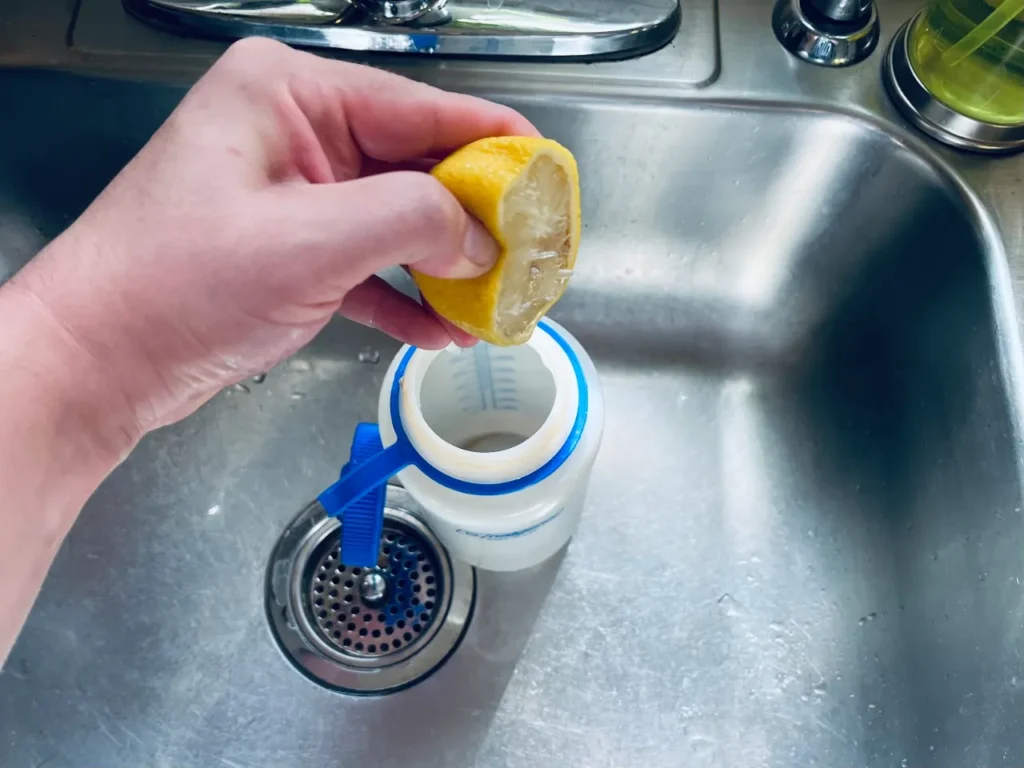
There are a few reasons you may have a strange plastic-y taste in your water bottle. Some of which are harmless and fairly easy to remove and others that could mean it’s just time for a new bottle.
If your bottle’s brand new, the plastic taste is likely just from residue that made its way into your bottle during manufacturing. A cleaning or two with some soap and water should clear it up with no problem.
The only exception is if you bought a super cheap bottle made of low-quality plastic — which is more likely to leach chemicals into your drink. If that’s the case, there’s not much you can really do about it. The plastic will continuously leech for the life of your bottle.
Though that cheap piece of crap out and invest in a high-quality plastic bottle made from Tritan Plastic or a higher-quality HDPE. I personally like Nalgene bottles when it comes to plastic bottles because of their insane lifetime warranty (they really will replace almost any bottle) and their high quality standards. What are Nalgene bottles made of.
If your bottle’s on the older side and just suddenly started having a plastic taste, it could mean that the plastic is scratched or gouged enough to cause leeching or so worn that it’s actually beginning to chemically deteriorate.
To be sure, try soaking it with some fresh-squeezed lemon juice to see if it remove the taste:
- Fill your bottle with ¼ cup of fresh-squeezed lemon juice, topping off the rest of the way with hot water.
- Let soak for at least half an hour, though longer is better.
- Give your bottle a thorough cleaning with soap and water.
- Air dry upside down on a drying rack fully before testing your bottle.
If it doesn’t do the trick, it’s probably just time to replace your bottle.
How To Get Earthy Or Mildewy Tastes Out Of Plastic Bottles

If you have an earthy taste in your plastic bottle, there’s a good chance that mold or mildew are growing somewhere inside.
Oftentimes, mold will be hidden on the underside of the lid, particularly under the gasket (if your bottle has one) and mildew can (and will) grow on any of the interior surfaces of your bottle.
And the problem is, once it gets bad enough, normal cleanings won’t really cut it.
You’ll need to use a natural antifungal cleaner, like vinegar or baking soda (or both):
- Soak your bottle in a 50/50 mixture of water and distilled white vinegar for at least 30 minutes, but ideally overnight. I prefer to submerge the bottle and lid in a large bowl, so I know the underside of the lid is being cleaned as well — but simply filling the bottle and soaking it upside down works pretty well too.
- Make a paste of equal parts baking soda and water. Aim for a toothpaste-like consistency, adding more baking soda or more water as needed.
- Empty the vinegar from the bottle and scrub all interior surfaces of your bottle using your baking soda paste and a non-abrasive bottle brush or toothbrush, paying special attention to reach all the little cracks and crevices under your lid.
- Let the mixture sit on your bottle for at least 15 minutes or up to overnight.
- Rinse off the baking soda mixture and clean your bottle as normal with dish soap and water.
How To Get Weird Drink Tastes Out Of Plastic Water Bottles
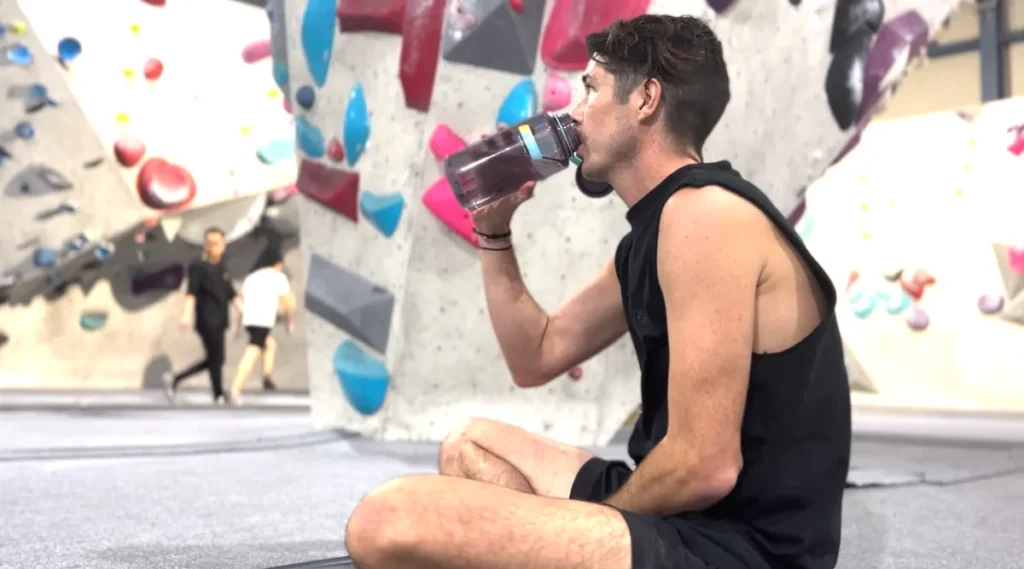
If you drink anything other than water from your plastic bottle, it may absorb some of that flavor and impart it in whatever else you happen to be drinking — sometimes with some pretty gross results.
And the problem is, because the flavor is sometimes actually IN the plastic of your bottle, normal cleaning methods aren’t always very effective.
An easy solution that sometimes helps is to add ⅓ cup of antibacterial mouthwash to your bottle, closing it, shaking for about three minutes, and following with a thorough cleaning.
- Mouth rinses cleanses and promotes healing of minor oral wounds
- Helps promote healing of: oral sores, irritations, mouth burns
- Oxygenating action removes oral debris to facilitate healing
- Soothes minor gum inflammation from dental procedures, dentures and orthodontic appliances
- Antiseptic mouthwash, alcohol free formula
If that doesn’t work, you’ll need to bust out the big guns.
Bleach baby!
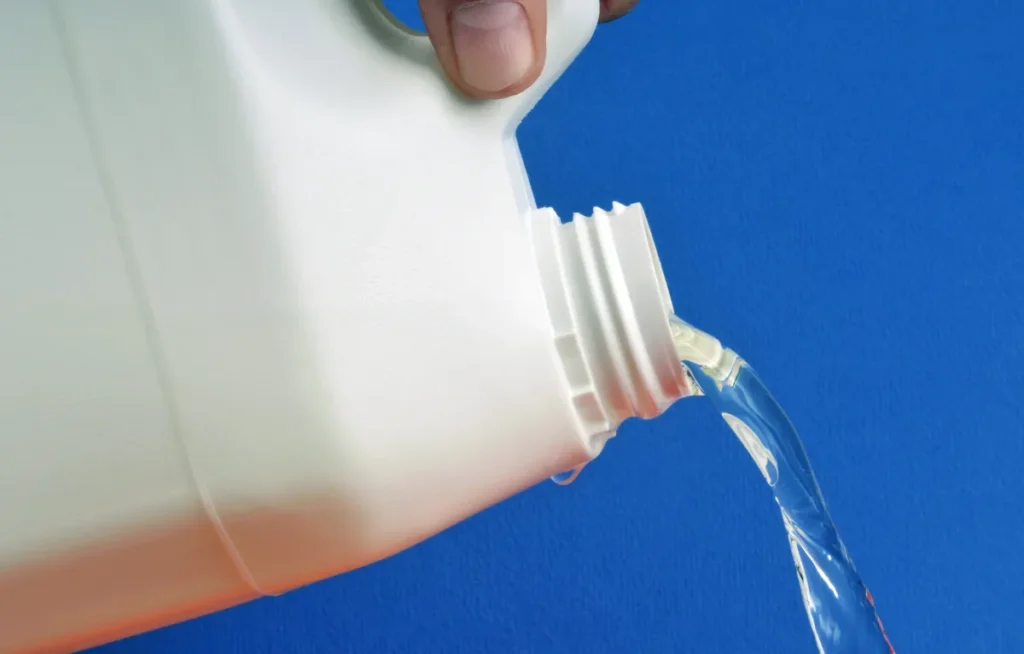
While bleach isn't good for plastic bottles over the long run as it can wear down the plastic and deteriorate it, using diluted bleach every once and a while should be fine.
- Fill your bottle as full as possible with hot water.
- Add a teaspoon or two of baking soda.
- Add a few drops of bleach. Don't overdo it.
- Close your bottle, shake well, and let soak overnight.
- Clean your bottle with soap and hot water, making sure that all bleach is removed.
Because bleach is so harsh on plastic, this method is best used sparingly.
Milton sterilizing tablets, which are usually used to sterilize baby bottles, can also work.
• Expertly developed to sterilise in 15 minutes all baby items using cold water
• Hospital grade disinfectant
• The Milton cold water method of sterilising has been used by mums and midwives for over 70 years
• Kill 99.9% of germs
• No need to boil or rinse and no residual taste remains



